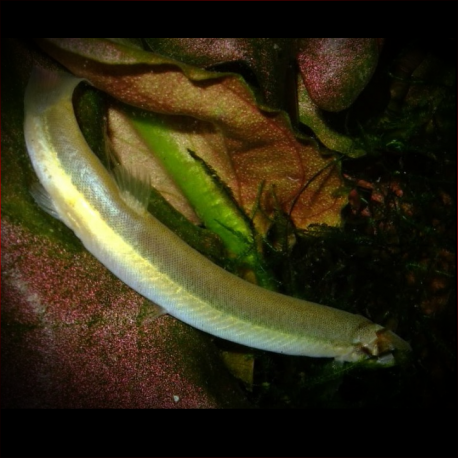More info
Datasheet
| Minimum Tank Size | 60 litres / 15.85 US gallons |
| Maximum Size | 5.0cm / 1.97inches |
| Temperature | 21°C / 69.80°F - 26°C / 78.80°F |
| Hardness | 0.00dgH / 0ppm - 8.01dgH / 143ppm |
| pH | 3.5-7.0 |
General Description
The Pangio Sp. 'Pan02', commonly known as Kuhli Loach, belongs to the family Cobitidae and is classified under Cypriniformes. These fish typically grow up to 5.0cm in size and are often sold under the generic term "kuhli" or "coolie" loaches in the aquarium trade. They are characterized by their long, slender body shape, relatively high number of vertebrae, and the positioning of their dorsal fin behind the origin of the pelvic fins.
Aquarium Setup
For the optimal setup of Kuhli Loaches, a soft, sandy substrate is recommended as they have a digging behavior and may bury themselves at times. Coarser gravel should be avoided to prevent stress or injury. The tank should include driftwood roots, branches for structure and shady spots, and dried leaf litter for cover. Dim lighting is preferred, and aquatic plants like Microsorum, Taxiphyllum, and Cryptocoryne species can be added. Gentle filtration with minimal surface agitation is suitable, avoiding high flow rates to prevent stress. Tank covers are important as loaches, including Kuhli Loaches, are known to jump occasionally.
Behaviour
Kuhli Loaches are peaceful fish that coexist well with their kind and other tankmates. In their natural habitat, they are found in large groups and exhibit a behavior of clustering together in nooks or caves when resting. It is recommended to keep a minimum of 5-6 specimens in a group to ensure their social well-being. Suitable tankmates include small, peaceful species like Boraras, Sundadanio, and certain Rasbora and loaches from the Nemacheilidae family.
Feeding and Diet
These loaches are micropredators that sift through substrate to extract insect larvae, small crustaceans, and organic detritus. In captivity, they accept sinking dried foods but should also be offered live and frozen options like Daphnia, Artemia, bloodworms, and micro worms to meet their dietary needs.
Reproduction & Dimorphism
Information regarding the reproduction of Kuhli Loaches is currently unrecorded. In terms of sexual dimorphism, adult females are typically heavier and slightly larger than males. Mature males exhibit a visibly branched and thickened first pectoral-fin ray.
Habitat and Distribution
Kuhli Loaches, like other Pangio species, are commonly found in shallow, slow-moving sections of forest streams, swamps, oxbows, and backwaters in South and Southeast Asia. They thrive in habitats with minimal dissolved minerals, low pH levels, and substrates composed of peat, mud, or sand, often abundant in leaf litter piles. Distribution information remains unknown for the specific Pangio Sp. 'Pan02'.

